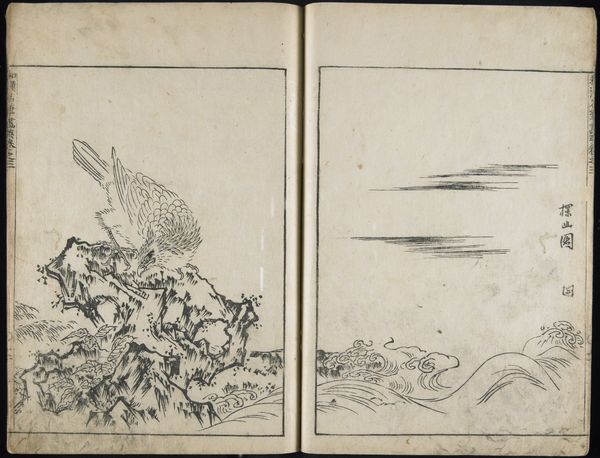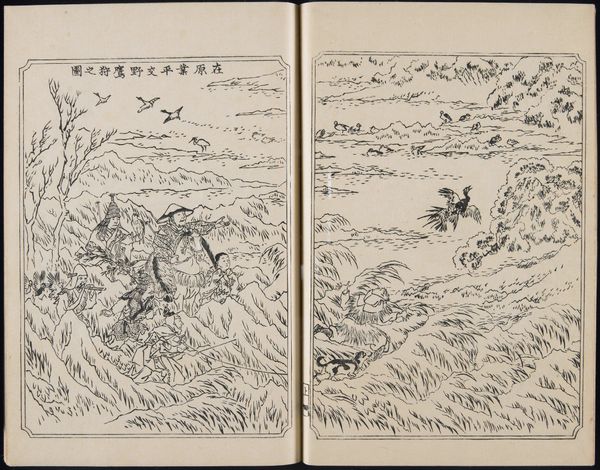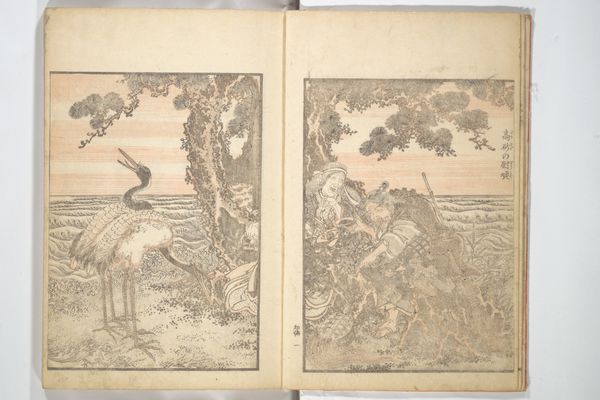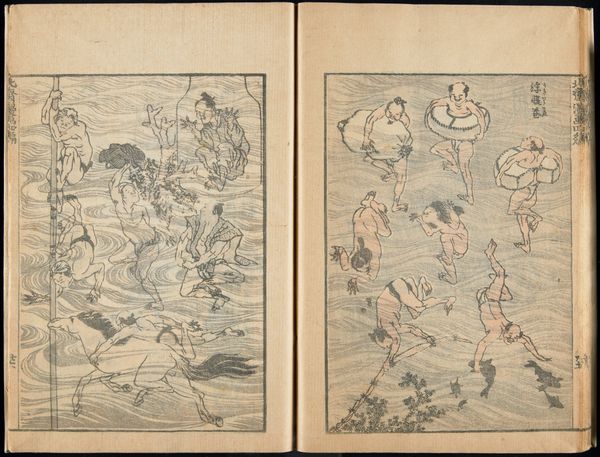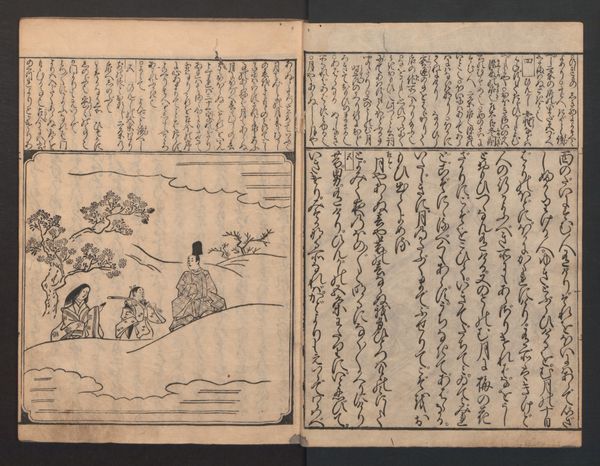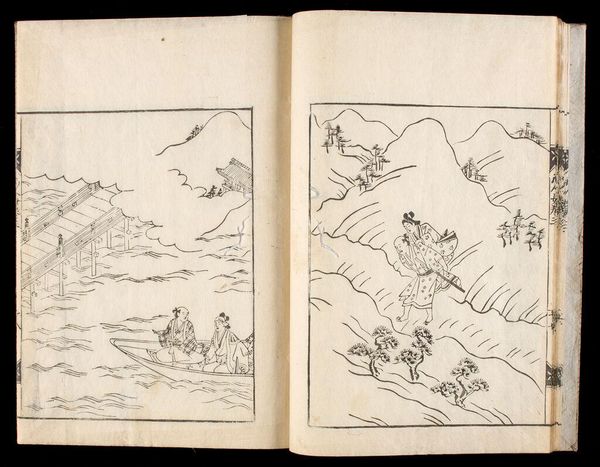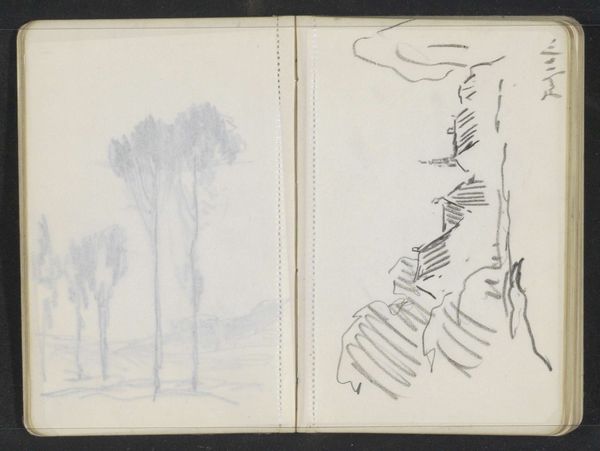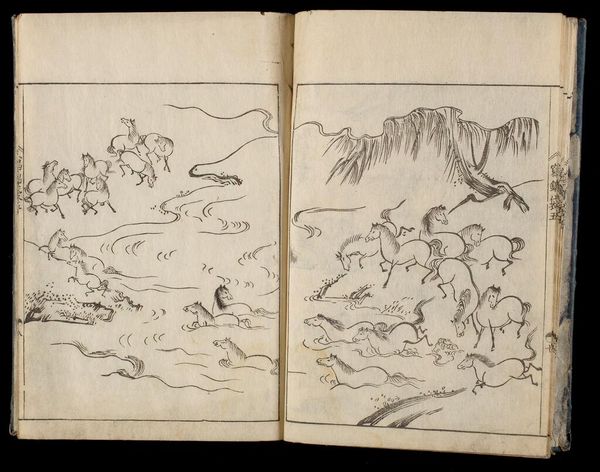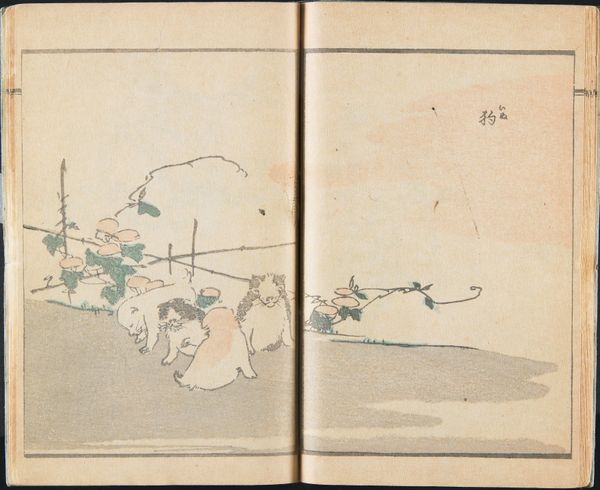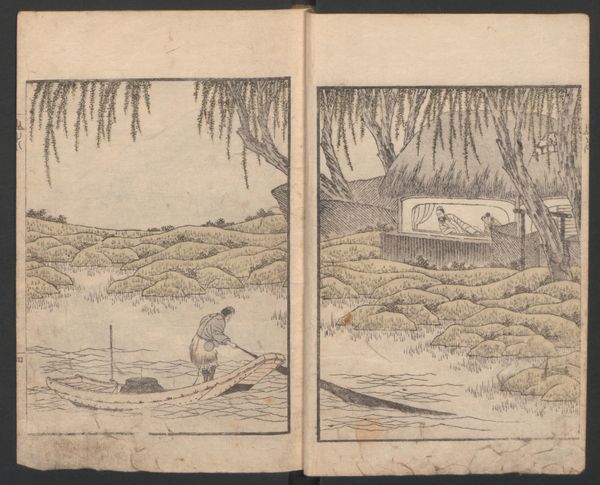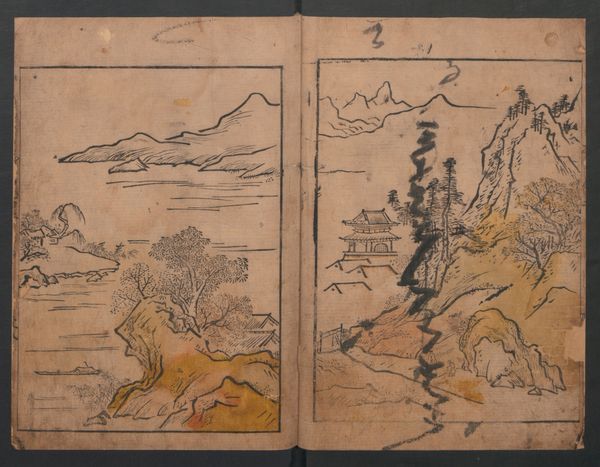
drawing, paper, ink, woodblock-print, pen
#
tree
#
drawing
#
aged paper
#
quirky sketch
#
book
#
asian-art
#
sketch book
#
landscape
#
bird
#
ukiyo-e
#
japan
#
paper
#
personal sketchbook
#
ink
#
sketchwork
#
character sketch
#
woodblock-print
#
pen-ink sketch
#
sketchbook drawing
#
pen
#
storyboard and sketchbook work
#
sketchbook art
Dimensions: 10 x 7 1/2 in. (25.4 x 19.1 cm)
Copyright: Public Domain
Editor: Here we have an illustrated book from between 1615 and 1868 by Kano Tan'yū, currently housed at the Met. It appears to be ink on paper. The aged quality of the paper gives the drawings a certain delicate feel. How would you interpret its impact, particularly considering the materials and method of its creation? Curator: From a materialist perspective, this work invites us to consider the tangible aspects of artistic production in 17th-19th century Japan. Look closely – the tools used, the quality of ink, the fibers of the paper, all point to specific modes of artisanal labor and the availability of resources. It's fascinating how these 'simple' drawings reveal a complex relationship between the artist, the materials, and the socio-economic context in which they were produced. Editor: I see what you mean. It’s not just about the image, but also the production...the access the artist had to these materials. Does the use of woodblock-printing affect how you see the book? Curator: Absolutely. Woodblock printing, a method of mass production, democratizes art. Think of the skilled labor needed to carve the woodblocks, prepare the paper, and then actually print. How does that relate to other contemporary modes of cultural and artisanal production happening in Japan? Is it challenging traditional ideas about art as an exclusive pursuit? Editor: So, examining the materiality shifts the focus from the artist’s vision to broader questions about production and accessibility. Curator: Exactly. By understanding the ‘how’ – the making of art – we engage in its social life. What are its economic, historical implications? Editor: That gives me a lot to think about, seeing it through the lens of production opens up so many questions. Thanks! Curator: Indeed! And it’s a reminder to ask, ‘how did this art *arrive* at where it is now?’ which ultimately leads to better awareness and knowledge.
Comments
No comments
Be the first to comment and join the conversation on the ultimate creative platform.
